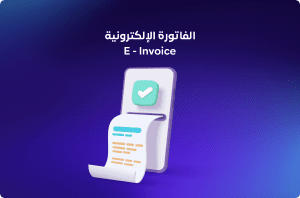In today’s world, where the complexity of taxes and financial transactions increases day by day, there is an urgent need for effective tools that help us organize our financial affairs and understand our tax obligations easily and conveniently. This need is what the VAT Calculator seeks to meet, as it is one of the most intelligent and advanced tools in our digital age, and with one click, this tool can transform tax complexities into a smooth and transparent process, enabling us to make informed financial decisions and avoid any unpleasant surprises. So in this article, you will discover in detail how this calculator works and how this powerful digital tool can change the way we deal with financial and tax affairs. We will also learn about its many advantages, so follow along.
What is a value-added tax?
A value-added tax is an indirect tax imposed on the supply and import of goods and services in more than 160 countries. It is worth noting that this tax is imposed at every stage of the supply chain, from the purchase of raw materials until the sale of the final product to the consumer. In 2018, the Kingdom of Saudi Arabia imposed a value-added tax of 5%, but it increased to 15% as of July 1, 2020, to combat the COVID-19 pandemic.
Benefits of using a VAT calculator
Using a VAT calculator in the Kingdom of Saudi Arabia has many essential benefits for any person or company that needs to calculate this tax accurately. Below is an overview of the most important of these benefits:
Preparing invoices accurately
Using a VAT calculator, accurate invoices can be generated that include the correct amounts of tax, which helps keep financial records clean and prevents any potential disputes with customers or tax authorities.
Quick calculation of VAT
This calculator is distinguished by its ability to perform quick and accurate calculations to determine the amount that must be paid as tax on sales or purchases. Thus, this helps users make sound financial decisions quickly and reduces the possibility of errors.
Reducing human errors
Manual VAT calculations are subject to the risk of human error, which can lead to major problems, but using a calculator reduces this risk significantly, resulting in more reliable financial decisions.
time-saving
Using a VAT calculator enables users to perform calculations very quickly compared to manual methods, and thus this translates into a saving of time and effort, allowing users to focus on other essential tasks in their business.
How do I calculate the value-added tax in Saudi Arabia?
In the Kingdom of Saudi Arabia, value-added tax is applied to goods and services at a standard rate of 15%, so here are the steps to calculate the tax in a simplified manner:
Determine the type of good or service.
The first step is to ensure the classification of the good or service on which you wish to calculate the tax. In the Kingdom of Saudi Arabia, there are three main types of goods and services, which are:
- Non-deductible.
- Tax-exempt.
It is worth noting that knowing this classification is important to determining the correct tax rate.
Determine the tax rate.
The standard rate of VAT in the Kingdom of Saudi Arabia is 15%. However, there are some exceptions, as different tax rates apply to specific goods and services. Therefore, it is important to ensure that you know the correct tax rate for the good or service in question.
Calculating the tax value
To calculate the tax value, all you have to do is multiply the value of the good or service by the tax rate. For example, if the value of the good is 100 riyals and the tax rate is 15%, then the tax value will be 100 x 0.15 = 15 riyals.
Calculate the total.
After calculating the value of the tax, it must be added to the value of the good or service to get the total. In the previous example, if the value of the good is 100 riyals and the tax value is 15 riyals, the total will be 100 + 15 = 115 riyals.
Submit a tax return.
Finally, you must ensure that the tax return is submitted on the dates specified by the General Authority of Zakat and Income. It is worth noting that you must also pay the tax due and submit the necessary tax declarations. It is recommended to use a cloud accounting program, such as Qoyod, to ensure tax is calculated correctly and to comply with all local laws and instructions.
A practical example that helps understand the calculation of value-added tax in the Kingdom of Saudi Arabia
Suppose that you have a consulting company based in the Kingdom of Saudi Arabia, and in June, you were able to achieve sales with a total value of 150,000 Saudi riyals. Based on the instructions of the Zakat, Tax, and Customs Authority, the value-added tax rate is 15%. The steps of the calculation process can be shortened as follows:
Steps to Calculate VAT
- VAT = (percentage x monthly sales value).
- Value added = (15% x 150,000 riyals).
- VAT equals 22,500 Saudi riyals.
Total sales, including tax
- Total monthly sales, including tax, = monthly sales value + value-added tax.
- Monthly sales, including tax, are 150,000 riyals plus 22,500 riyals.
- Total monthly sales, including tax, are 172,500 riyals.
Paying value-added tax to the Zakat, Tax, and Customs Authority
The company must pay the combined value-added tax, amounting to 22,500 Saudi riyals, to its tax account, and the above can be summarized as follows:
the month | Monthly sales (SAR) | VAT (15%) | Total sales, including tax (SAR) |
June | 150,000 | 22.500 | 172.500 |
Examples of calculating value-added tax in Saudi Arabia
Calculate VAT for an amount not including tax.
When purchasing a good or service at a price that does not include tax, the value-added tax must be added to the original price to calculate the total amount. Let us assume that the original price of the good is 2,000 Saudi riyals. The value-added tax is calculated as follows:
- VAT = original price x tax rate.
- Added tax = 2000 x 0.15 = 300 Saudi riyals.
VAT is then added to the original price to get the total amount.
- Total amount = original price + VAT.
- Total = 2000 + 300 = 2300 Saudi riyals.
Calculate VAT for the amount, including tax.
If the total amount of the good or service is included in VAT, the original price must be calculated without the tax, and the value of the tax paid must be known. If the total amount is 2,300 Saudi riyals, the steps are as follows:
- Amount without tax = Total amount / (1 + tax percentage).
- Without tax, 2,300 ÷ 1.15 = 2,000 Saudi riyals.
Then the VAT is calculated as follows:
- VAT = total amount minus amount without tax.
- Added tax = 2300 minus 2000 = 300 Saudi riyals.
VAT calculation equations
To calculate VAT on an amount not including tax, the system is as follows:
- VAT = amount x (VAT percentage / 100).
- Total amount = amount + VAT.
To calculate VAT on a tax-inclusive amount:
- Amount without tax = Total amount / (1 + tax percentage).
- VAT = total amount minus amount without tax.
How do I calculate the tax in the calculator?
There are many people who wonder: How is the value-added tax calculated? It is worth noting that there are two ways to do this:
Add VAT to the selling price.
When the selling price does not include VAT, it can be added using the following formula:
- VAT amount = selling price x (VAT percentage / 100).
Then, the total amount, including VAT, can be calculated using the formula:
- Total amount = selling price x (1 + VAT rate / 100).
This method is useful when the selling price is quoted without VAT. This allows customers to know the total amount they will pay.
Excluding value-added tax from the selling price
When the selling price includes VAT, it can be excluded using the following formula:
- VAT amount = selling price x (VAT percentage / 100 + VAT percentage).
Then, the total amount without VAT can be calculated using the formula:
- Total amount = selling price x (100 / (100 + VAT percentage)).
This method is useful when the selling price includes VAT. It allows merchants to separate the tax value from the basic selling price.
VAT Calculator provided by Qoyod
The VAT calculator provided by Qoyod is an innovative and free tool designed to facilitate the process of calculating the value-added tax (VAT) on goods and services in the Kingdom of Saudi Arabia. This calculator is easy to use and highly accurate, making it an ideal tool for individuals and companies alike.
It is worth noting that the calculator works to provide a smooth user experience, as users can enter the value of the good or service and then obtain the calculated added value immediately, which contributes to saving time and effort expended on conducting complex manual calculations and reduces the possibility of errors occurring.
How to use the VAT calculator provided by Qoyod
The VAT calculator provided by Qoyod is a useful tool that makes it easy for individuals and companies to calculate the value of added tax on goods and services in a simple and quick way. In order to be able to use this calculator effectively, there are some basic steps that must be followed, which are as follows:
Enter the amount.
First, the user must enter the sales volume of the good or service for which he wishes to calculate the tax. This amount must be entered in Saudi Riyals. It is worth noting that it is important to ensure the accuracy of the entered amount to ensure correct results.
Choose status
The next step is to determine the state for which you want to calculate the tax. This calculator offers two main options:
Included price (including tax): In this case, the entered amount includes the added tax value.
Prices before tax (not including tax): Here the entered amount is the price of the good or service without adding the tax value.
If you want the price to include taxes, click on the check mark next to the phrase “taxes included.”
Enter the discount.
After choosing the case for which you want to calculate the tax, comes the step of writing the deduction, and the amount is in Saudi riyals, in addition to writing the value-added percentage.
the account
After entering the amount, selecting the appropriate status, and entering the discount, the final step comes, which is the calculation process. The user clicks on the “Calculate” button. The VAT calculator provided by Qoyod then calculates the value of the added tax based on the amount and status entered and displays the final results. It will also show you the discount amount, the total before tax, and the total after tax.
Conclusion
The VAT calculator represents a vital tool for any individual or company seeking to simplify financial and business operations. Thanks to this tool, determining the value of the tax due or added becomes an easy and quick process, saving time and effort. As technological developments continue, we can expect further improvements and innovations that will make tax calculators smarter and more accurate. Therefore, it is necessary to take advantage of these tools and include them in our financial strategies to ensure tax compliance and achieve financial transparency.
In the end, we must clarify that if you want to calculate the added tax quickly, you can use the VAT calculator provided by Qoyod. It is worth noting that the program also offers all its customers: electronic invoice systems, as well as point-of-sale systems, stores, customers, and so on. Which makes it the best accounting program.
After knowing what the VAT calculator provided by Qoyod is and its importance, try Qoyod now for free for 14 days. It is an affordable accounting program.
![]() Subscribe to annual plans and pay in four installments.
Subscribe to annual plans and pay in four installments.



















Subscribe to annual plans and pay in four installments.

 KSA VAT Calculator
KSA VAT Calculator